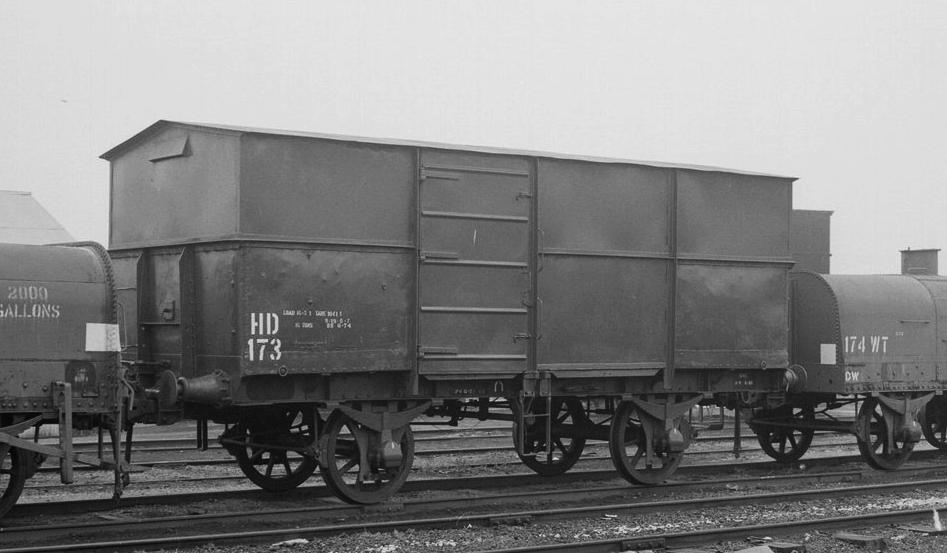

The HD class was one of the most fascinating group of vehicles. As with the W class, the group consisted of hand-me-down stock placed into low mileage traffic.
The HD vehicles have their heritage in the box vans acquired from the Deniliquin & Moama Railway takeover in 1923. The box vans of the D&MR were coded HD, the H adopted from VR coding practice and the D to denote D&MR. This coding was applied to the vehicles prior to the 1920's, probably to assist in stock identification when this stock was on government railway lines. Prior to this coding the D&M stock was unclassed. The numbers of the HD vans were 5 - 31.
As these vans had been built in the late 1870's, they were unsuitable for freight traffic and so were placed into service as 'Plant' trucks. These vans were used for storing workmen's materials. They were either allocated to a location or were assigned to fitters or 'Signals & Telegraph' staff involved in traveling around Victoria.
These vans were gradually scrapped up to the 1950's. In 1955, the railways began to construct vehicles for the same use. They used surplus open wagon of the _IA__ "tommy bent" type and covered then with metal sides and a roof. A full height door was provided each side. These vehicles were placed into the HD group. The highest numbered HD van ex D&M was number 25 at the time, so the numbers for the new wagons started at 26.
By the late 1950's the railways began to revamp the rundown system. Opportunity was taken to use vehicles being scrapped and a large number of _U__ vans were modified for HD service.
The start of the standard gauge project began in the late 1950's also. A large number of plant trucks were required for equipment storage and use. A group of vehicles with HD 149 the prototype, were engaged specifically for the construction. Many of these wagons were stencilled "NES": (N)orth (E)ast (S)tandardisation, lettering still visible 20 years later.
The class numbers ran 5 - 115, 143 - 218, 220 - 253, 5452. Wagons 116 to 142 were never converted as for some reason the program at North Melbourne was stopped.
HD 219 was never classified as such. The vehicle that was to be HD 219 was IB 5452, one of the _IB_ wagons converted in the 1940's for plant truck service. The author now assumes the vehicle retained the IB number as it was the only screw coupled vehicle in the group. The high number would ensure it was uniquely identified as such. This vehicle was rescued from scrapping and is now restored at the ARHS Museum, Newport, as an IB.
By the 1990's, the entire system of railway maintenance had changed to road and central depots. Many of the class were scrapped with some being kept by groups for preservation.
HD 237 ex HH 12 ex TT had a curious life. It was stationed at Jolimont Workshops and appeared to be a Plant truck in electrical service. Once a year, about October, the van was shunted out and transferred to Dimboola. About one month later the van returned. Reason for the move and the use at Dimboola was never discovered.